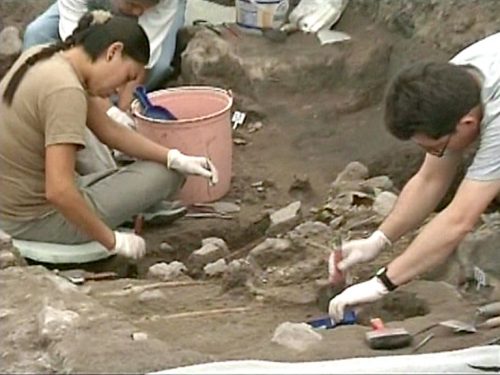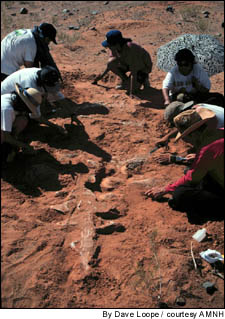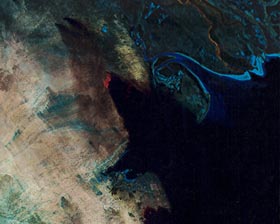
Dug up or done up? Recently publicized artifacts from the Bible lands have stirred unusual controversy among archaeologists and other scientists.
It’s not unusual for archaeologists to turn up fragments and shards in a structured dig as they sift through rubble and examine remnants of buildings and caves. Teams of archaeologists and adventurers regularly trek to Israel and other countries in the near Middle East hoping to unearth Biblical-era artifacts.
However, when artifacts emerge on the scene quite apart from archaeological digs, experts rightly question authenticity. Further, when an owner can’t prove provenance of an artifact and lacks a certifiable history of the item’s origins, there’s reason to wonder where the artifact came from. Artifacts without documentation that are promoted by dealers or private collectors require informed impartial scrutiny. Looted artifacts also find their way into the clandestine international antiquities market.
Antiquities from the distant past are difficult to date precisely. The time span during which materials like papyrus, bone, stone, pottery and glass age can be measured, but not with absolute precision. Usually, when artifacts emerge in the course of an archaeological expedition, documentation accompanies the discoveries.
One of the most significant and well-documented finds in situ were the ancient scrolls discovered in caves along the Dead Sea. Written on fragments of animal skins and papyrus, the Dead Sea Scrolls were unearthed from 1947 to 1956 and remain the oldest known versions of biblical and non-biblical texts describing life in the Holy Land during the time of Jesus. In August 2001, a team of researchers directed by Robert Eisenman of California State University, Long Beach, uncovered human remains at Qumran, the Dead Sea Scrolls area. More bones were found the following year in the same spot. The bone fragments may date back 2,000 years. (Israeli archaeologists involved in the dig quickly conveyed the bones to religious caretakers.)
Mystery Box
One of the more controversial artifact unearthed of late is the James ossuary. (Please see related story: Jesus’ Brother’s “Bone Box” Closer to Being Authenticated ) The stone burial box measures 20 inches (50 centimeters) long, 10 inches (25 centimeters) wide, and 12 inches (30 centimeters) long and bears the inscription, “James, son of Joseph, brother of Jesus.” The ossuary made its debut in October 2002 in the pages of the Biblical Archaeology Review, published in the United States. Jews in the area near Jerusalem used limestone ossuaries like the James burial box between the first century B.C. and first century A.D., roughly the historical period of Jesus, to rebury desiccated remains of people a year after their body’s original interment. Scholars debate whether the box’s inscription was a recent addition. Some even question the financial motives of those associated with the ossuary’s discovery.
A second controversy concerns a fragment of stone now referred to as the Jehoash Tablet. Incised Phoenician writing on the legal pad-size stone referred to the Jerusalem Temple at the time of King Jehoash. This artifact was announced in the Israeli daily Ha’aretz. If the tablet text could be validated, it might enhance Jewish claims to certain disputed holy sites. But there’s been little discussion to date of how a fake inscription might impact the claims to that area where mosques now stand.
Age and Custody
Such cases serve to illustrate the problem of antiquities that surface without clear provenance and archaeological context, particularly those with claims to great historical import. Some archaeologists question the authentication processes used to verify such antiquities and indirectly question the political motivations behind them.
Robert Eisenman, a professor of religion at California State University, Long Beach, cautions that curators and scientists have to be extremely careful when evaluating new items with handwriting or other supposedly datable indications. All artifacts with text involve a certain amount of analysis, including radiocarbon analysis. Eisenman says he is concerned about the preconceptions held by people involved in such analysis. “Such preconceptions are very worrisome,” he said. “For instance paleography [the study of ancient writing and inscriptions] is being used now to authenticate all kinds of different objects. It was used on the Dead Sea Scrolls to make all sorts of extravagant claims that were often at odds with the internal evidence or what the texts themselves said. These are not exact sciences. Yet the public has been given the impression that they are, when in fact they are extremely questionable,” said Eisenman.
“The public might hear that something is first century BCE [before Common Era, also known as B.C.] handwriting style, but formal styles are very stubborn and these styles may have endured for hundreds of years. Even if a given paleographer could determine with any precision when a given handwriting style originated, they certainly would have no idea when a given scribe actually used it,” said Eisenman.
“I am an historian and I do text analysis. I look at what the text itself says. This is what is meant by internal data, not external—which is tests like paleography or carbon dating,” he said.
“I knew immediately that the inscription [of the James ossuary] I was seeing could not be possible. Knowing about the period and about James, I knew immediately that people would not have thought to put that parentage or fraternal relationship on an ossuary in that manner at that time,” he said.
Eisenman, an expert in early Christianity, is the author of James the Brother of Jesus, published in 1998.
Antiquities fraud is on the increase because people can imitate inscription styles or even get a paleographer to authenticate their object. “I would take anything whose provenance is questionable or chain of custody unknown as extremely worrisome and be very [cautious] of it,” he said.
Sharp Edges
Many people may already be familiar with the “rifling” marks ballistics experts look for on bullets found in gunshot victims that link the slugs to specific handguns or rifles.
In the case of antiquities, such surface marks, acquired at manufacture or during their use, can be particularly helpful in determining whether elements like inscriptions were original to the objects’ creation—or added at a later date.
In addition to its manufacturing surface marks left by the tools of its original craftsmen, the James ossuary would have acquired additional service-related scratches as it crushed against other ossuaries on the cave shelves where Jewish remains were routinely stored. In later years, the box would also acquire marks from collapsing cave roof material or its final excavation by modern-day archaeologists. Such scratches must visibly run across the inscription grooves, if the inscription was on the box surface at the time of burial.
Daniel Eylon, a materials engineering professor at the University of Dayton in Ohio has no doubts concerning the authenticity of the box known as the James ossuary. However, he does voice doubts about the authenticity of its inscription.
“For establishing the relative chronology of certain surface features, such as grooves, tool marks or cracks, with respect to time of manufacturing, or period of use, surface scratch analysis and edge rounding analysis are typically used,” noted Eylon in a letter about the James Ossuary which he sent to the Biblical Archaeology Review in October 2002, which was not published.
Very few of the letters on the ossuary show scratches crossing the incisions. For other letters the service scratches terminate where the incisions begin.
Sharp surface edges are subjected to abrasion, wear, and corrosion. Areas on the box, such as the chiseled edge-trim groove demonstrate a high level of deterioration. Yet, the ossuary is marked with surprisingly sharp-edged and sharp-bottomed incisions in most of the letters of the first four words. The only letters that look authentic are the Shin, Vav and Ain of “YESHUA.” They have the weathered-look with round edges, patina, and are crossed with service scratches, stated Eylon.
According to Eylon’s analysis, conducted while the James ossuary was on exhibit in Toronto and included in a special report that was published in the March/April 2003 issue of Skeptical Inquirer, the box and its surface patina is authentic. But Eylon noted that a first-century awl or a twentieth-century two-inch (five-centimeter) iron nail will leave exactly the same surface impression, with no other telltale signs.
“After seeing it with my own eyes, I firmly believe that someone engraved the majority of the inscription rather recently.” Eylon believes the forgery may have been copied from inscriptions from three ossuaries described in A Catalogue of Jewish Ossuaries—In the Collection of the State of Israel, a 1994 tome by L.Y. Rahmani. The book catalogues and reviews hundreds of ossuaries with designs and inscriptions.
Age Specific Handicaps
The process of setting precise ages to bone fragments or stone antiquities said to be 2,000 or more years old is complex. Organic artifacts such as bones can undergo radiocarbon analysis with a high degree of accuracy if they are collected properly. The laboratory which conducts the research can get to around plus or minus 100 years or less with good samples, said Eric M. Meyers, a professor of religion at Duke University in Durham, North Carolina.
“Stone antiquities cannot be dated unless there are some definitive inclusions in them that have chronological significance, such as coal flecks or microformanifera,” said Meyers.
Currently, there is no an international agency responsible for verifying artifacts such as the James ossuary or the Jehoash tablet or the bone fragments of Qumran. Meyers points out that many governments where fragments are found or come to the marketplace have agencies and labs that do this sort of analysis. “They also could have vested interests in authenticating the artifacts in order to promote tourism or to heighten national identity,” said Meyers.
Unbiased analysis might be most effectively performed by an independent agency from a nation not intimately involved in the custody or discovery of specific artifacts, Meyers says. He suggests that analysis should be conducted by an archaeologist whose future or pocketbook is not tied to the issue. “It is absolutely unacceptable that a publisher [like Biblical Archaeology Review] and a dealer [such as Oded Golan] arranged for the authentication of a looted artifact and foisted it onto the Royal Ontario Museum without prior authentication,” said Meyers.
“Archaeologists can and do have biases, but most are reputable and can be trusted,” said Meyers. On the other hand, dealers and collectors want to improve their investment. Meyers worries that museums are pressured into poor decision-making when they are offered sensational finds that lack scientific undergirding, anticipating big publicity and increased visitor traffic. “Biblical Archaeology Review and Golan also made an exclusive with the Discovery Channel for a large fee, and its point of view is to authenticate,” said Meyers. The book deal on the James ossuary, which involved a huge fee, concerns an artifact still not authenticated, said Meyers.
Museum Curators Just Say No
The so-called Jehoash Tablet has undergone similar scrutiny and skepticism. The black stone tablet inscribed with Phoenician script refers to repairs ordered by King Jehoash, similar to passages in the Second Book of Kings. The tablet’s owner, also said to be Oded Golan, previously offered to sell it to the Israel Museum, but curators turned down the offer after examining the fragment, questioning its authenticity without saying that the writing was a forgery, according to an article by Nadav Shragai published in the Israeli daily Ha’aretz in January 2003.
Officials at the National Infrastructure Ministry’s Geological Survey of Israel, the agency that examined the tablet, asserted their tests were conclusive: No forgery would pass such extensive testing. If the inscription is authentic, the stone fragment could support Jewish claims to the Temple Mount, Shragai wrote.
Gabriel Barkai, a leading Israeli archaeologist from Bar Ilan University, told Shragai that if the tablet were authentic, it would be a first-of-its kind piece of physical evidence describing events in a manner that adheres to the narrative in the Bible.
In his conversation with Ha’aretz, Barkai noted: “[T]he problem here is that circumstances of the finding are not clear… .We should wait for the official scientific publication, at which time we will be able to probe this finding carefully. Right now, of course, we can’t rule out any possibility. It’s too bad that a matter of this sort was kept under wraps, apparently due to business concerns.”
Whatever the outcome of the current controversies, it’s certain that earnest teams of diggers will continue to sift the Middle Eastern soil looking for artifacts they believe were described in the Dead Sea Scrolls, using those ancient texts like a treasure map or a literal instruction guide. Undoubtedly, the hunt for quasi-mythical items such as the breastplate of Aaron or the ark of the covenant is on.






